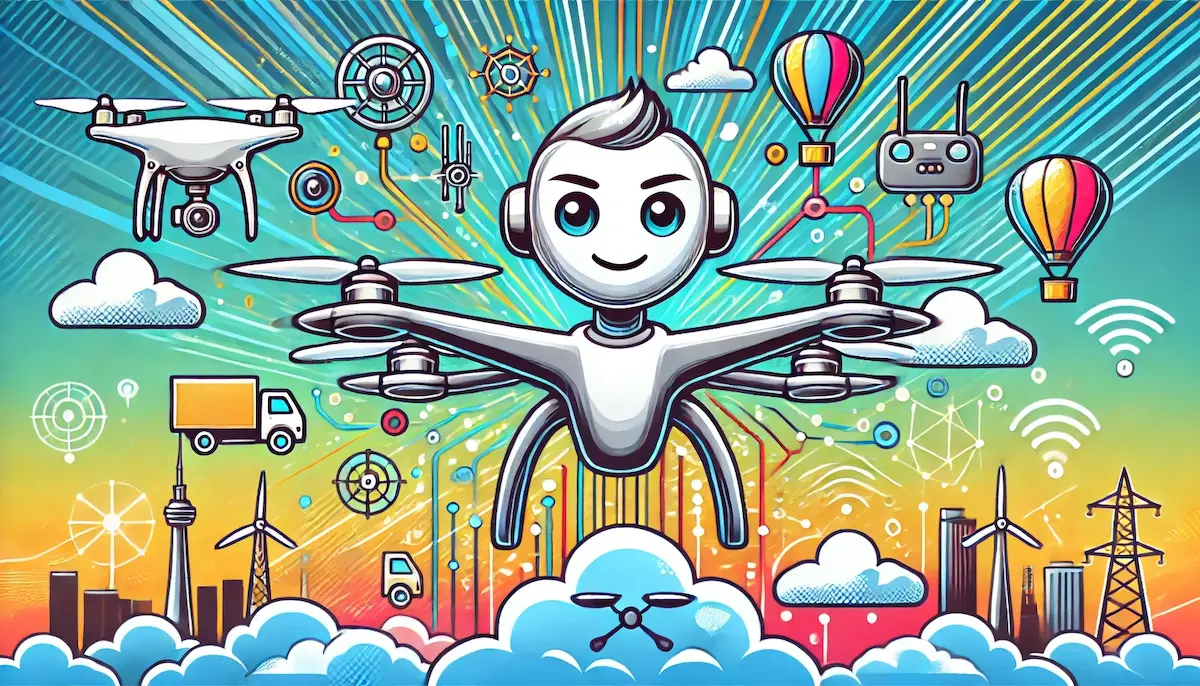Drone technology has evolved from its military origins to become a versatile tool with applications across various industries. Drones, or unmanned aerial vehicles (UAVs), are changing the way we approach tasks in fields such as agriculture, filmmaking, delivery services, and disaster management. Let’s explore what drone technology is, how it works, and its wide-ranging impact on modern society.
What is Drone Technology?
Drone technology refers to the design and use of UAVs that can be remotely controlled or autonomously operated. These flying robots can carry cameras, sensors, and other payloads, making them useful for a multitude of tasks. Drones vary in size, capabilities, and purposes, ranging from small consumer quadcopters to large military drones.
How Does Drone Technology Work?
Basic Components
- Airframe: The structural body of the drone, typically made from lightweight materials like plastic, carbon fiber, or aluminum.
- Propulsion System: Includes motors, propellers, and sometimes jet engines, providing the thrust needed for flight.
- Battery: Powers the drone, with lithium-polymer (LiPo) batteries being the most common due to their high energy density.
- Flight Controller: The brain of the drone, processing input from sensors and user commands to stabilize and control the drone.
- Sensors: Includes GPS, gyroscopes, accelerometers, barometers, and cameras, which help with navigation, stability, and data collection.
- Communication System: Enables remote control and data transmission between the drone and the operator, often using radio frequencies.
Operation
Drones can be operated in different ways:
- Remotely Piloted: The operator controls the drone using a remote control or a mobile app.
- Autonomous Flight: Pre-programmed flight paths and GPS coordinates guide the drone without real-time human intervention.
- Semi-Autonomous: Combines manual control with autonomous functions like automatic takeoff, landing, and obstacle avoidance.
Applications of Drone Technology
Agriculture
Drones are revolutionizing agriculture by providing farmers with detailed aerial views of their fields. They can monitor crop health, detect diseases, and optimize irrigation by capturing high-resolution images and using multispectral sensors. This helps farmers make data-driven decisions to improve crop yields and reduce resource usage.
Filmmaking and Photography
Drones have become indispensable tools in the film and photography industries. They offer unique perspectives and smooth aerial shots that were previously difficult or expensive to achieve. Filmmakers and photographers use drones to capture stunning visuals for movies, commercials, real estate listings, and events.
Delivery Services
Companies like Amazon and UPS are exploring the use of drones for package delivery. Drones can reduce delivery times, especially in remote or congested areas. Medical supplies, food, and other essential items can be quickly transported using drones, potentially transforming logistics and supply chain management.
Disaster Management
In disaster management, drones provide crucial assistance by surveying affected areas, assessing damage, and delivering aid. They can reach locations that are difficult or dangerous for humans to access, providing real-time data to coordinate rescue and relief efforts effectively.
Environmental Monitoring
Drones are used for environmental monitoring, including wildlife tracking, forest management, and pollution detection. They can cover large areas quickly, collecting data that helps scientists and conservationists protect ecosystems and manage natural resources.
Infrastructure Inspection
Inspecting infrastructure such as bridges, power lines, and pipelines can be challenging and risky. Drones offer a safer and more efficient alternative, capturing detailed images and data that help identify maintenance needs and prevent failures.
Benefits of Drone Technology
Efficiency
Drones can perform tasks faster and more efficiently than traditional methods. They reduce the need for manual labor and can cover large areas in a short time, increasing productivity in various industries.
Cost-Effectiveness
While the initial investment in drone technology can be high, the long-term savings are significant. Drones reduce the need for expensive equipment and labor, lowering operational costs.
Safety
Drones can perform hazardous tasks, reducing the risk to human workers. In industries such as construction, inspection, and disaster response, drones enhance safety by accessing dangerous locations.
Data Collection
Drones equipped with advanced sensors and cameras can collect vast amounts of data, providing valuable insights for decision-making. This data-driven approach improves accuracy and effectiveness in various applications.
Challenges and Future Outlook
Regulatory Issues
The rapid growth of drone technology presents regulatory challenges. Governments and aviation authorities are working to develop rules and standards to ensure the safe and responsible use of drones, addressing issues like airspace management, privacy, and security.
Privacy Concerns
The use of drones raises privacy concerns, as they can capture images and videos without people’s consent. Balancing the benefits of drone technology with the protection of individual privacy is a critical issue that needs to be addressed.
Technological Limitations
Battery life, range, and payload capacity are current limitations of drone technology. Advances in battery technology, materials, and AI will continue to enhance drone capabilities, making them more versatile and efficient.
Public Acceptance
Widespread adoption of drones depends on public acceptance. Educating people about the benefits and addressing their concerns will be crucial for the continued growth of the drone industry.
Conclusion
Drone technology is transforming industries and offering innovative solutions to complex problems. As technology advances and regulatory frameworks evolve, drones will play an increasingly important role in our lives, enhancing efficiency, safety, and data-driven decision-making across various sectors.
Blockfine thanks you for reading and hopes you found this article helpful.
